It is known that the presence of particulate contamination in a fluid system can be a major factor in controlling the longevity and reliability of the system. During the initial run-up phase and early life, the presence of particulate residues from the manufacturing and assembly process will cause a significant increase in the wear rate of the system and may even lead to catastrophic failure.
To achieve reliable performance of components and systems, it is necessary to control the amount of particles introduced during the build phase, with measurements of particulate contamination as the basis for control.
Because the function and performance of modern automotive fluid components and systems are sensitive to the presence of single or several critical size particles, the ISO 16232 series of standards have been drafted to meet the requirements of the automotive industry. Therefore, ISO 16232 requires an approved extraction method to analyze the total volume of the extracted liquid and the total volume of all contaminants collected.
The ISO 16232 series of standards is based on existing ISO International Standards, such as those drafted by ISO/TC 131/SC 6. These international standards have been expanded, revised, and new standards have been drafted to form a set of international standards for measuring and reporting the cleanliness levels of parts and components fitted in automotive fluid circuits.
1 Scope
This part of ISO 16232 defines a method for the determination of the size and number of contaminant particles extracted from parts, deposited on the surface of a membrane filter, and finally analyzed using a light microscope (LM) or a scanning Electron microscope (SEM) was used to measure. The result of this measurement is the particle size distribution on the membrane filter.
A complete analysis of all membrane filter surfaces is necessary when the function of parts and components may be impaired due to the presence of single or several critical particles.
Image analysis (IA) techniques can be employed to perform these analyses manually or automatically if suitable equipment is available.
Note 1: Manual counting across an entire surface is a difficult and tiring task, with accompanying errors. For this reason, an automatic counting system is recommended if the membrane filter can be prepared in a suitable manner as described in this standard.
NOTE 2 Counting and sizing results depend on many parameters, such as type and model of microscope, magnification used, illuminance and other setup conditions.
2. Normative references
The following references form part of the referenced sections of this document. For dated references, only this edition applies. For undated references, the latest edition (including any amendments) applies to this section.
ISO 16232-1, Road vehicles -- Cleanliness of fluid circuit components -- Part 1: Glossary of terms
ISO 16232-2, Road vehicles — Cleanliness of fluid circuit components — Part 2: Method for agitation to extract contaminants
ISO 16232-3, Road vehicles — Cleanliness of fluid circuit components — Part 3: Methods for extraction of contaminants by pressure washing
ISO 16232-4, Road vehicles — Cleanliness of fluid circuit components — Part 4: Methods for extraction of contaminants by ultrasonic technology
ISO 16232-5, Road vehicles -- Cleanliness of fluid circuit components -- Part 5: Method for extracting contaminants on a functional test bench
3. Terms and Definitions
Terms and definitions given in ISO 16232-1 apply to this document.
Instruments and equipment required for ISO 16232 cleanliness testing
JS100 Technical Cleanliness Inspection System, JC767 Component Cleanliness Cabinet , Electronic Balance

